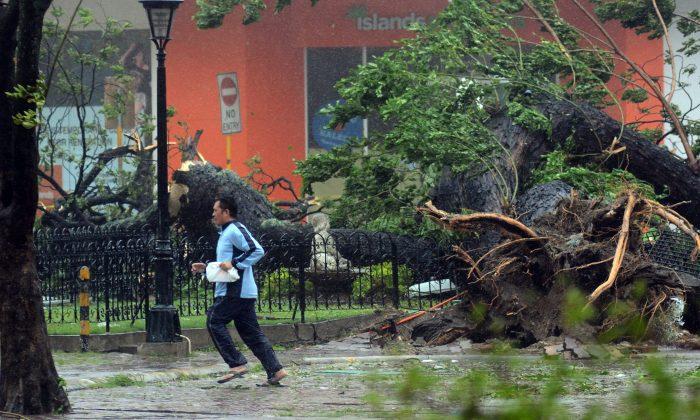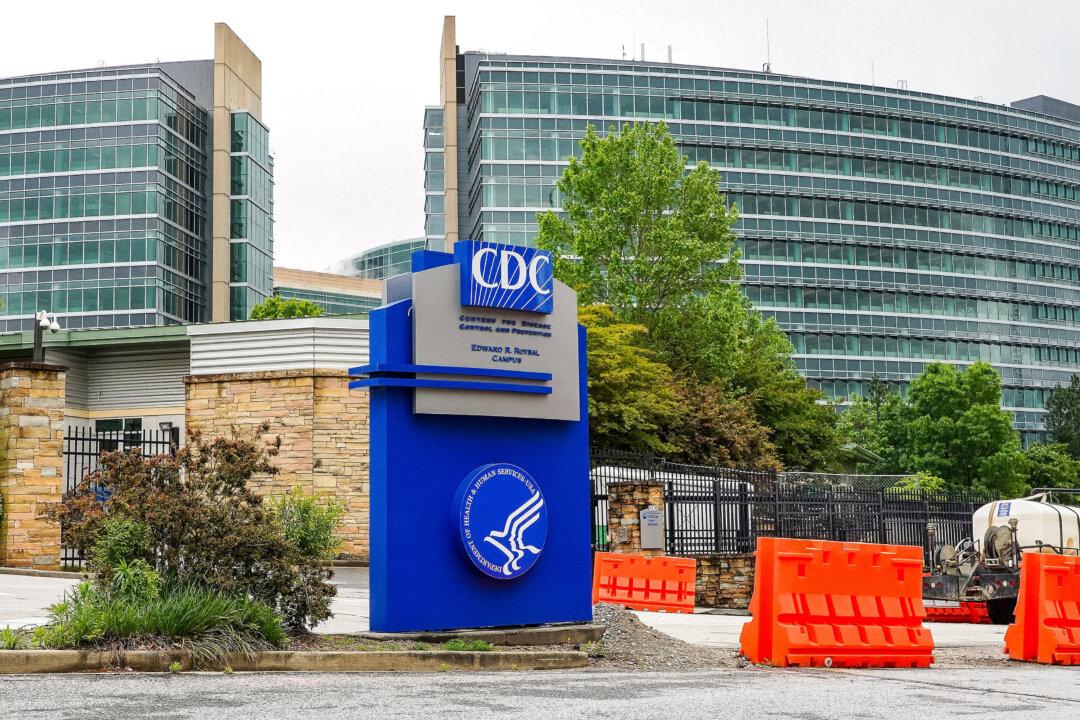Cebu City, which was directly hit by Typhoon Hainan, experienced a power outage on Friday and Saturday. Power officials said they are working to resolve he matter.
The Visayan Electric Co. said that it did “an area-wide blackout for everybody’s safety earlier, and it helped prevent accidents from happening.”
It posted a photo of downed power lines and trees.
“Hi, we are slowly restoring power in all areas. We'll try our best 2 restore power in ur area ASAP,” it said at around 3 a.m. local time on Twitter.
UPDATE from AP:
MANILA, Philippines (AP) — One of the strongest storms on record slammed into the central Philippines on Friday, killing at least four people, forcing hundreds of thousands from their homes and knocking out power and communications in several provinces. But the nation appeared to avoid a major disaster because the rapidly moving typhoon blew away before wreaking more damage, officials said.
Huge Typhoon Haiyan raced across a string of islands from east to west — Samar, Leyte, Cebu and Panay— and lashed beach communities. Nearly 750,000 people were forced to flee their homes.
Weather officials said Haiyan had sustained winds of 235 kph (147 mph) with gusts of 275 kph (170 mph) when it made landfall. That makes it the world’s strongest typhoon this year, said Aldczar Aurelio of the government’s weather bureau.
Due to cut-off communications, it was impossible to know the full extent of casualties and damage. At least two people were electrocuted in storm-related accidents, one person was killed by a fallen tree and another was struck by lightning, official reports said.
Southern Leyte Gov. Roger Mercado said the typhoon triggered landslides that blocked roads, uprooted trees and ripped roofs off houses around his residence.
The dense clouds and heavy rains made the day seem almost as dark as night, he said.
“When you’re faced with such a scenario, you can only pray, and pray and pray,” Mercado told The Associated Press by telephone, adding that mayors in the province had not called in to report any major damage.
“I hope that means they were spared and not the other way around,” he said. “My worst fear is there will be massive loss of lives and property.”
Eduardo del Rosario, head of the disaster response agency, said a powerful typhoon that also hit the central Philippines in 1990 killed 508 people and left 246 missing, but this time authorities had ordered pre-emptive evacuation and other measures to minimize casualties.
He said the speed at which the typhoon sliced through the central islands — 40 kph (25 mph) — helped prevent its 600-kilometer (375-mile) band of rain clouds from dumping enough of their load to overflow waterways. Flooding from heavy rains is often the main cause of deaths from typhoons.
“It has helped that the typhoon blew very fast in terms of preventing lots of casualties,” regional military commander Lt. Gen. Roy Deveraturda said. He said the massive evacuation of villagers before the storm also saved many lives.
The Philippines, which is hit by about 20 typhoons and storms a year, has in recent years become more serious about preparations to reduce deaths. Public service announcements are frequent, as are warnings by the president and high-ranking officials that are regularly carried on radio and TV and social networking sites.
Provincial governors and mayors have taken a hands-on approach during crises, supervising evacuations, inspecting shelters and efforts to stockpile food and relief supplies.
President Benigno Aquino III assured the public of war-like preparations, with three C-130 air force cargo planes and 32 military helicopters and planes on standby, along with 20 navy ships.
Among the evacuees were thousands of residents of Bohol who had been camped in tents and other makeshift shelters since a magnitude-7.2 earthquake hit the island province last month.
Relief workers said they were struggling to find ways to deliver food and other supplies, with roads blocked by landslides and fallen trees.
The storm “unleashed fierce winds and harsh rains that uprooted big trees and toppled electric poles and power lines,” said Aaron Aspi, a spokesman for World Vision in Bohol.
From Samar, the typhoon battered Leyte, then the northern part of Cebu and nearby islands before lashing Panay — islands with some of the best beach resorts in the Philippines.
As of 8 p.m., the typhoon was north of Palawan province, 320 kilometers (200 miles) southwest of Manila, and had weakened a bit with sustained winds of 215 kph (134 mph).
Forecasters said the storm was expected to move out of the country and into the South China Sea on Saturday morning, where it was likely to pick up renewed strength on its way toward Vietnam.
Dozens of flights in the central and southern Philippines were canceled. A storm surge estimated at 5 meters (15 feet) damaged a seaside airport in Leyte’s Tacloban city. Airport workers moved to the tower and were safe but no other details had been reported because communications were cut by the typhoon, aviation official John Andrews said.
“They’ve been incommunicado. The last message we got from them was that the airport was ruined,” Andrews said.
Andrews said the typhoon also damaged the airport in Kalibo town in Aklan.
The U.S. Navy’s Joint Typhoon Warning Center said shortly before the typhoon made landfall that its maximum sustained winds were 314 kph (195 mph) with gusts up to 379 kph (235 mph). Those measurements are different from local weather data because the U.S. Navy center measures the average wind speed for 1 minute while local forecasters measure the average for 10 minutes, which can result in lower numbers.
If the U.S. figures are correct, they would be the highest ever for a tropical cyclone when it made landfall anywhere on Earth, beating out Hurricane Camille, which had wind speeds of 305 kph (190 mph) at landfall in the southeast United States 1969, said Jeff Masters, a former hurricane meteorologist who is meteorology director at the private company Weather Underground.
There have been three instances of storms with higher winds, but all were at sea when the winds were measured and they were more than 50 years ago when measurement accuracy was an issue, Masters said. He said the record was Super Typhoon Nancy in 1961.
“195 mph winds, there aren’t too many buildings constructed that can withstand that kind of wind,” Masters told The Associated Press.






Friends Read Free